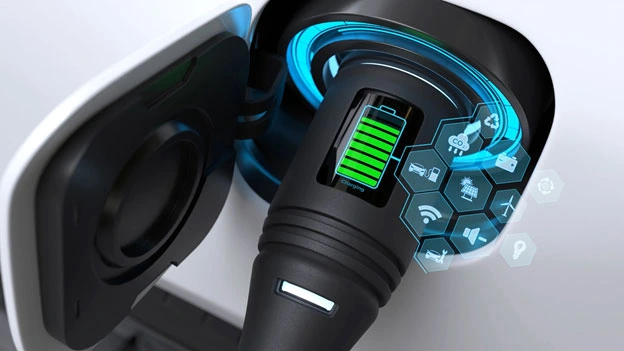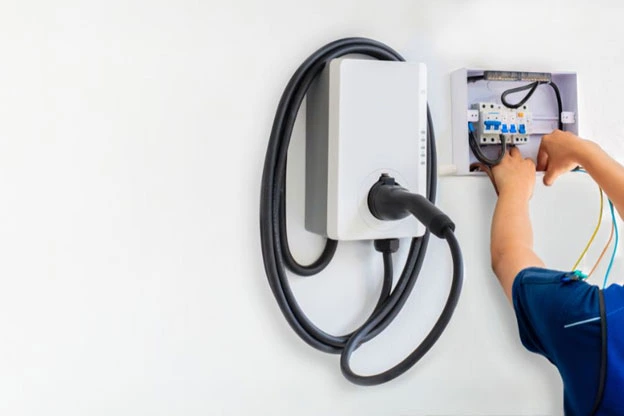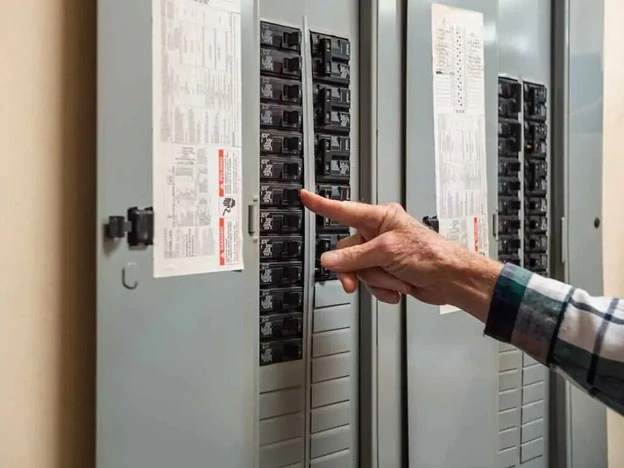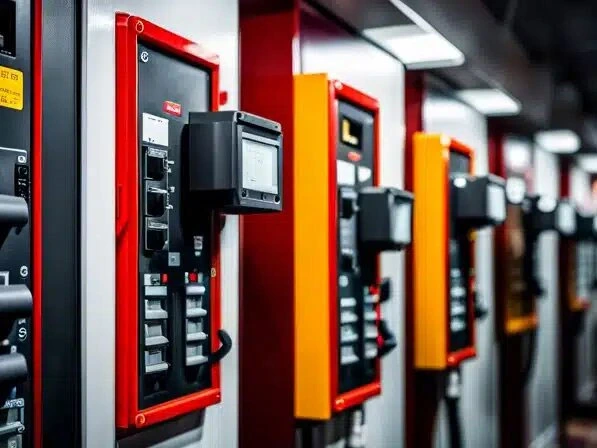Summary
Determining if your electrical panel can support EV charging is a crucial safety procedure. Not making this check can lead to electrical fire hazards, electrocution, and property loss. This article outlines the importance of checking your electrical panel’s capacity and how to do the check.
Table of Contents
Introduction
With the increased demand for electric vehicles (EVs), more businesses and property owners are looking into installing EV chargers. However, before starting, be sure your electrical panel can manage the additional load. Installing EV charging infrastructure without the necessary electrical panel update can have devastating effects for your business.
But do not worry; we at Tercero Inc. understand the importance of a safe and efficient charging system. We are here to help you determine your electrical capacity and install your charger to the best standards. Suppose you’re still on the fence about an upgrade. In that case, this blog will help you understand the importance of electric panel capacity and guide you through the process of determining whether your current electrical panel can support your EV charger.
Let’s begin.
Understanding Electrical Panel Capacity
Electrical panel capacity is the maximum amount of electricity a panel can handle before it short-circuits or causes an electrical fire.
Understanding your building’s electric panel capacity is crucial to ensuring safe and reliable electricity distribution. An electric panel’s capacity refers to the maximum amount of electrical power it can handle.
To understand your electric panel’s capacity, check the fuse box for the panel rating. Then, add up the amp ratings of all fuses. Calculate the total load of connected devices and appliances and compare it to the panel rating. If the total load exceeds the panel rating, your panel is due for an upgrade.
Why Electrical Capacity Matters for EV Charging

Electrical capacity is important for EV charging because it directly impacts the efficiency and safety of your charging station. In the worst-case situation, electrical panels that are unable to manage EV charging loads may cause an electrical fire, jeopardizing customers’ lives and property.
Here are some reasons why you should verify your electric panel capacity before installing an EV charger:
1. Charging Speed
Higher electrical capacity enables faster charging speeds, which is critical for EV users who need to refuel quickly.
2. Vehicle compatibility
Some EVs require higher capacity charging, so make sure the electrical panel can accommodate the load.
3. Safety
Exceeding your fuse box’s electrical capacity might result in overheating, fire, or other safety issues, endangering persons and property.
4. Reliability
Inadequate capacity can result in brownouts, blackouts, or equipment damage, disrupting EV charging and potentially leaving drivers stranded.
5. Future-proofing
As electric vehicles become more prevalent, electrical panels may need to be modified to meet the increased energy demand.
Key Indicators That Your Electrical Panel May Need an Upgrade
Here are some indicators that your electric panel might need an upgrade:
1. Limited Circuit Availability
If your building has more fuses than circuit breakers, or if you need to install extra circuit breakers to your panel, it may be time to upgrade your electric panel. Fuses are an older type of protection that can blow when a circuit is overloaded. They are high maintenance because they must be replaced every time they blow. However, circuit breakers offer more protection, such as arc-fault and ground-fault protection.
2. Frequent Tripping of Breakers
Frequent tripping indicates that your electrical panel struggles to handle the power demand. It can also wear out the breakers, rendering them ineffective and leaving your building vulnerable to electrical fire hazards.
3. Age of the Electrical Panel
The average electrical panel box lasts 25 to 40 years. An old panel may not comply with modern safety standards and will be prone to electrical shock, fire, and overheating.
How to Assess Your Electrical Panel’s Ability to Support EV Chargers

Before installing your EV charging infrastructure, you must get a qualified electrician to assess your panel’s capacity. The steps to this assessment are:
1. Calculating Power Demand for EV Chargers
Calculating the power demand for your EV chargers is essential for supporting your charging needs. First, you must ascertain your charging mode: level 1 (120V), level 2 (240V), or level 3/DC Fast Charging. The type of electric vehicle should also be considered, as different models have different battery capacity and charging requirements.
2. Checking Your Panel’s Amp Rating
To check your panel’s amp rating, look for the label or documentation, which should show the rated current in amps. The information is usually found on the panel’s nameplate, inside the panel door, or in the electrical room.
3. Determining Spare Capacity in the Panel
Determining spare capacity in a panel helps you identify the amount of unused electrical power, memory, and processing capacity available. It also helps you determine how much load or usage the panel can handle before upgrades are needed. To check for spare capacity, check the panel’s current usage and load, compare it to the maximum capacity, and calculate the difference.
Steps for Upgrading an Electrical Panel for EV Charging
If your electric panel cannot support electric vehicle charging, you must get a licensed electrician to determine if an upgrade is right for you. Below are important considerations:
1. When and Why an Upgrade is Necessary
A crucial step to upgrading your panel is understanding when it is necessary. Some of the reasons for panel upgrades are:
- Frequent breaker tripping
- Outdated panel
- Increased power needs
- Safety concerns
- Code violations
- Amperage capacity
Upgrading your electric panel can also improve safety, electrical capacity, and reliability.
2. Working with Licensed Electricians
Working with a certified electrician is critical to ensuring the safety and quality of electrical work. Qualified electricians are also more likely to have the proper insurance and bonding to safeguard their consumers from potential problems.
3. Permit Requirements and Local Regulations in Los Angeles
A permit is required for any additional work or service panel upgrades in Los Angeles. Obtaining the permit ensures a seamless workflow and adds a level of safety to the project. Before you begin, check to see whether there are any building codes or home association regulations.
Common Costs Involved in Electrical Panel Upgrades

There are various elements that determine the cost of upgrading your electric panel. Some of these include:
- Labor costs: Hiring a professional electrician to perform the modification might range from $500 to $2000, depending on the intricacy of the job and location.
- New panel costs: A new electrical panel might cost anywhere from $500 to $2000, depending on its style, size, and features.
- Permit fees: Obtaining the required permits from your local government can cost between $50 and $500.
- Inspection fees: An electrical inspection to ensure the modification satisfies safety regulations might be from $100 to $500.
Additional Costs for Electrical Infrastructure Upgrades
When replacing your electrical panel, you may need to pay for certain extra expenditures, such as:
- Additional outlets: If you wish to add new outlets to your charging station, doing so during an upgrade saves money because the electrician does not need to make two trips.
- Drywall repairs: If your electrician needs to access some electrical components behind your wall, they’ll remove some parts of the wall, and fixing them might cost additional money.
Available Incentives and Rebates for Electrical Panel Upgrades
There are several incentives and rebates available for electrical panel upgrades. Here are a few:
1. Federal Tax Credits
You can claim a federal tax credit of up to 30% of the project cost, capped at $600. The credit can be claimed for electrical panels that meet specific standards and are installed with qualified appliances like heat pumps.
2. Rebate Programs
Some utility companies offer rebate programs for electrical panel upgrades. For example, the Los Angeles Department of Water and Power (LADWAP) offers rebates for expenses incurred during EV charger installations, including upgrades to your electric panel.
Conclusion
While installing an electric vehicle charger is a worthwhile investment, upgrading your electrical panel will ensure that the station is safe, reliable, and offers efficient charging time. Even if you have just recently upgraded your panel, EV chargers sometimes have their own outlets that might not be supported by the available features. So, hiring a certified electrician to go through the work and make the necessary additions will save you a lot of time, stress, and money in the future. Contact Tercero Inc. for your electrical panel upgrade.
Frequently Asked Questions (FAQs)
You should check the main breaker rating (usually 100, 150, 200, or 400 amps) and ensure you have enough space in the panel for a new 240-volt circuit.
Yes, you need a permit to upgrade your electrical panel in Los Angeles. Your electrician will usually know the rules and how to handle it.
Electrical panel upgrades are expensive. The cost usually depends on size, power requirements, additional features, and the complexity of the project. You can expect to spend $500 to $5000.
You can claim a federal tax credit of up to 30% of the project cost. Utility companies like the Los Angeles Department of Water and Power (LADWAP) offer rebates on EV infrastructure.
You can install your EV charger without upgrading your electrical panel if the panel has enough capacity to bear the load. However, if your panel is outdated or has fewer circuits, installing without an upgrade can lead to a fire hazard, inefficient charging, and electrocution.

